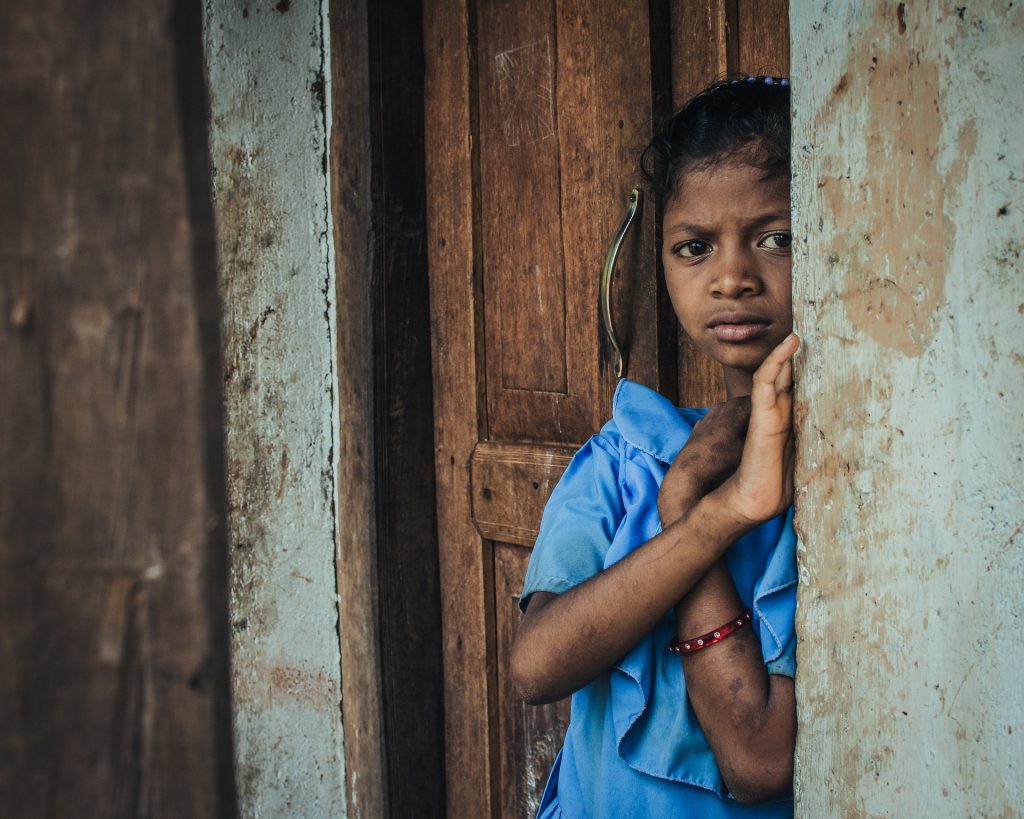8 min read
The second wave of the COVID-19 pandemic in India has brought unprecedented and unmitigated devastation, with shocking statistics and even more shocking on-ground realities. In its aftermath, not only have the inadequacy of our healthcare system been brutally exposed, but a larger question looms around the future socio-economic implications of such a tragedy. At a time when even the privileged are struggling to access basic healthcare resources – whether it be medication or hospital beds – what happens to the vulnerable and marginalized? What happens to girls and women, who, as historical evidence suggests, have always had to bear a larger brunt of the adverse effects of any large-scale calamity?
Between April to October 2020, at the height of the first wave of the COVID-19 pandemic’s first wave, Centre for Catalyzing Change (C3) had conducted multiple surveys across several demographics in several resource-poor and high-burdened states in India, which confirmed some of our worst suspicions – that women and adolescents had been disproportionately affected by the larger consequences of the pandemic. From school dropouts to loss of livelihoods, from lack of access to reproductive health services to hindered menstrual hygiene, from rising instances of gender-based violence to a tremendous toll on mental health – women and girls found themselves compromised and vulnerable every step of the way.
“Just after the lockdown, the factories all closed down, and my father’s work and my brothers’ work both stopped,” an adolescent girl respondent from Madhya Pradesh had stated in one of our surveys. “As a result, there was no income flow in our family anymore. The struggle to meet basic food and shelter needs was so immense that my family could no longer support my education. I do not know whether I can go back to school anymore.”
And it wasn’t just adolescents who had expressed concern around falling behind in terms of education, but teachers too. In another survey that we conducted among 1000 teachers across 3 states, over 72% teachers stated that they feared school dropouts from ‘children from poor households’, with one such teacher saying: “Given the financial challenges households are facing, and the barriers to accessing online education, not only will learning outcomes be low, but there is a strong chance that young girls will be forced into early marriage instead of being allowed to complete their education.”
The barriers to online education are palpable, given India’s significant gendered digital divide, which accounted for 50% of the world’s gendered digital divide. Another C3 survey, conducted across 29 districts in 10 states, found that gender biases, financial constraints, lack of infrastructure support, and absence of digital skills puts girls at a distinct disadvantage when it comes to digital access. 71% of the girls surveyed did not own a mobile phone because of financial constraints, 42% of girls were allowed access to a mobile phone for less than an hour in a day and 32% of the girls only knew how to use a smartphone to make calls. Given that education had largely moved online during the pandemic and that smartphones and other digital devices had become an essential mode to access education, this was a concerning reality indeed.
At the same time, pregnant women and new mothers struggled to access ante-natal and postnatal care, family planning services and other essential women’s healthcare, due to the lockdown and also their own fear of catching covid in a healthcare facility. Nearly 81% women from our ‘Lived Realities’ survey, conducted between April and August 2020 across 9 states, reported not receiving ante-natal care during the initial lockdown period in 2020. “A woman in labour was even stopped by the police on the way to the Hospital,” recounted a frontline worker from Bihar during our survey, “in spite of the fact that the lady was pregnant and had to rush to the Hospital for delivery.”
Menstrual hygiene too became heavily jeopardized – in Jharkhand and Chhattisgarh, only 1% of girls reported receiving sanitary pads during the initial lockdown months. “Managing menstrual hygiene without access to sanitary napkins was a huge challenge faced by us. Shops were closed and schools were closed, thus supply was not available during this period,” a young female respondent from Odisha had stated in the survey.
Another alarming reality that came up in our Lived Realities report was the rise in Gender Based Violence (GBV) during the lockdown, triggered by confinement at homes, making women and young girls even more vulnerable than before. The physical and emotional abuse they experienced was further amplified by economic instabilities and future anxieties brought about by the pandemic. “We (women) are hit by men for giving them less to eat when there is shortage in food. There is an increase in the number of cases of physical abuse by male partners during the lockdown situation,” said a woman respondent from Odisha.
But most of all, the pandemic is taking a significant mental toll on women and girls, with 35% of adolescent girls reporting increased stress at home during lockdown. At the financial level, their emotional distress stems from the loss of livelihoods and the curbing of sources of income for the family, and at the social level, women and girls reported an increased burden of household chores and an increased responsibility of taking care of family members.
C3 made a number of efforts to mitigate the impact of the pandemic on girls and women. Last year, we went door to door in Gumla, Jharkhand, to educate households on domestic and gender-based violence and connect them to resources in case they (or anyone they know) are facing such violence during the lockdown. Additionally, we focus on building the digital and financial literacy of young girls – our digital and financial literacy project has led to promising outcomes, equipping girls from Chhattisgarh the skills to use the internet, manage online payments, and learn about government saving schemes. We also hosted online sessions for adolescents to facilitate greater peer interaction during the lockdown and helped them with strategies to mentally cope with the situation, and built the capacities of elected women representatives in Panchayati Raj Institutions to address the health needs of women, especially the needs of pregnant and lactating mothers and newborns in their communities.
However, the present scenario is far graver, beset with a new whirlwind of challenges. Though our survey findings and relief efforts were almost from a year ago, the insights we have gained from it can still prove to be a blueprint for possible future strategies, through which we can continue to support the needs of women and girls.
- Make sure that we do not lose girls from schools: We need to identify the girls who are at a greater risk of dropping out of school because of financial or social reasons, and mobilize community support to ensure that they do not lose out on their education. Providing financial support through special scholarships, supplementary education and open learning systems can go a long way in incentivizing their education and making sure their futures are not compromised.
- Bridge the digital divide: Given that countless other essential services have moved online during the pandemic, equipping girls and women from marginalized communities with digital access and literacy is the need of the hour. Some of the ways in which this could be done is through providing:
- Affordable access to community devices and internet at the community level
- Provisions in villages and panchayats for digital resource centres for girls
- Special digital e-learning modules and training sessions
- Counselling sessions and workshops with families to curb gender based discrimination
- Provide Sanitary Pad Banks: To address the shortage of sanitary pads and menstrual hygiene products during the pandemic, something as simple as a sanitary pad bank in communities to supply sanitary pads to women and girls for free can go a long way. C3 has launched a ‘sanitary pad bank’ initiative in 8 districts of Bihar, and the initiative is run by young girls from 40 panchayats, who proactively work with the community to build awareness and to ensure access around menstrual hygiene.
- Meet economic needs: To mitigate the economic impact of COVID-19, response measures need to be gender-transformative and inclusive. Vocational training and skills-building programs are essential for young girls during this time, to equip them with 21st century skills necessary for seeking out independent livelihoods in the future and attaining financial self-sufficiency. Entrepreneurship training programs for adult women so that they can build their own livelihoods, such as by encouraging their participation in farming and in independent cottage industries, is also essential.
- Combat gender-based violence: To tackle the rise in gender-based violence caused by the COVID-19 pandemic, prevention and redressal services need to become more visible. More awareness needs to be raised around services like women’s helplines, One Stop Centres, counselling, legal aid, and so on.
As philanthropists, while it is important to support and invest in providing immediate relief through healthcare supplies, food, other essential resources, there is also a need to look at the long-term picture – to anticipate the impacts of the pandemic that go beyond just health, the factors that intimately affect vulnerable populations like women and adolescents – and finding solutions to rebuild and re-envision. Hope is not lost as long as we can work together to defeat the disasters of this pandemic, one solution at a time.


















